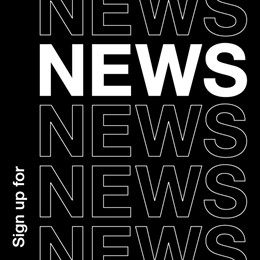The politics of music or the music in politics

Alexander Wodrich, managing director at why do birds, takes a look at the fascinating history of audio in American politics. With a seismic election fast approaching, he asks how the parties can mobilise the electorate and win them over to their side, and what role music can play in this game.
Music and advertising have always gone hand in hand. The day the radio advert was born, music accompanied the spoken message. This was also the birth of audio branding. And it didn’t need specialised branding agencies to state the obvious:
- Music emotionalises advertising messages. It lends the advertised products a sense of lightness and reduces the distance between the target group and the product.
- Jingles and sung product names are more memorable than just spoken taglines or names.
An endless number of advertising music pieces and jingles have since been produced.
It was not until many years later that the next step was taken in the interplay between music and advertising: the use of popular, already existing songs. The aim was to emotionally charge a campaign either with the image of the artist or with the lyrical idea of the song.
In 1967 Buick asked The Doors for permission to adapt their #1 hit “Light my fire” and sing "Come on, Buick, light my fire". Lead singer Jim Morrison refused.
Not so Michael Jackson in 1984, when he rewrote the lyrics of his No. 1 hit "Billie Jean" for the "New Pepsi Generation" and sang them anew.
Microsoft paid an estimated 3 million US-Dollars for the usage rights of the Rolling Stones song “Start me up” for their 1995 Windows campaign. It didn’t need an adaptation. The title was the message and it seemed as if the song had been written for the campaign and not back in 1981.
Political parties have also understood these mechanisms of action and want to participate in the power of music.
During their campaign appearances, candidates use popular music that everyone knows and likes and that underlines their campaign message. It is important that the audience can identify with the song, the artist, and the lyrics. This colors the political candidate's advertising message in a positive light.
Barack Obama has used “Signed, Sealed, Delivered, I’m yours” by Stevie Wonder during his campaign. The Motown classic instantly puts everybody in a good mood, the message is simple and relatable, and the artist-choice is clever as well, as it alludes to the black community.
The most played artist in US election campaigns is – who would have thought? – Bruce Springsteen: A patriot, the guy next door, born in the USA. A man who will have people on their feet in any stadium and would probably have good chances of becoming the next president himself, if only he wanted to.
It's easy to find lyrical hooks that fit the theme, even when the songs were written with totally different motives: “We are the Champions” (Queen) for Donald Trump, “Heroes” (David Bowie) for Joe Biden, “Power to the People” (John Lennon) for Bernie Sanders, “Ain’t no mountain high enough” (Marivn Gaye) for Barack Obama… The candidates even publish Spotify playlists with these tracks during the election campaign.
It’s very interesting to see, that none of the parties have their own unique brand sound. They do invest in their visual identities, but not in an audio branding. Doing audio branding implies consistency and using a brand sound for a longer period of time. Here too, a consistent sound could help to build trust in the long term. But it seems that parties want to reinvent their appearance every four years and don’t want to be reminded of what they did in the past. In politics, it’s all about a brighter future. No turning back. But wait a minute: “Make America great again”? An allusion to the past? It’s a nostalgia for a time that perhaps never was… I’m sure we can find a song for that.













